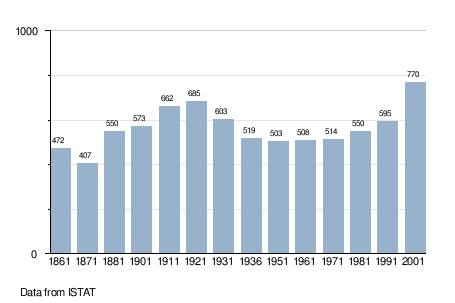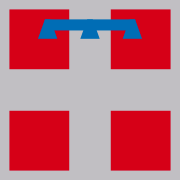Pisano, Piedmont
| Pisano | |
|---|---|
| Comune | |
| Comune di Pisano | |
 Pisano Location of Pisano in Italy | |
| Coordinates: 45°47′N 8°30′E / 45.783°N 8.500°ECoordinates: 45°47′N 8°30′E / 45.783°N 8.500°E | |
| Country | Italy |
| Region | Piedmont |
| Province | Province of Novara (NO) |
| Area | |
| • Total | 2.8 km2 (1.1 sq mi) |
| Population (Dec. 2004) | |
| • Total | 816 |
| • Density | 290/km2 (750/sq mi) |
| Time zone | UTC+1 (CET) |
| • Summer (DST) | UTC+2 (CEST) |
| Postal code | 28010 |
| Dialing code | 0322 |
Pisano is a small town (municipality) in the Province of Novara in the Italian region of Piedmont, located about 100 kilometres (62 mi) northeast of Turin and about 40 kilometres (25 mi) north of Novara. As of 31 December 2004, it had a population of 816 and an area of 2.8 square kilometres (1.1 sq mi).[1]
Pisano borders the following municipalities: Armeno, Colazza, Meina, and Nebbiuno.
Origin of the name
The name Pisano comes from latin; the prefix Pis is from Pisius or Pisone, probable owners of a hill. The suffix -ano means that it was a place dedicated to farming.
The Logo
The logo contains a peach tree: the small town was, in fact, renowned for its peaches. At the top of the tree is a snake, the main symbol of the Visconti, a noble family.
Geography and weather conditions
The municipality of Pisano is located at 396 m. of altitude, on the side of the hill of “Alto Vergante”. The territory counts many woods, meadow and small rivers. At the foot of the hill there are many farmhouses with greenhouses.
Climate
The climate, heavily influenced by the Lake Maggiore, is characterised by warm winters and fresh summers. Autumn and Spring are typically rainy.
The Church
The main church, situated at the centre of the village, is dedicated to Saint Eusebio, Vercelli’s bishop in the 4th century, and the Maccabees. It was extended during the 17th century. On the porch can be seen a big mural representing the Virgin of Mercy.
The aisle has the shape of a Latin cross with three chapels; the first contains the baptismal font; the second, located behind the pulpit, has an altar dedicated to the Lady of the Rosary, with statues of Saint Sebastiano and Saint Rocco at each side. These saints were anciently prayed to protect the village from epidemics. The third chapel is now dedicated to Saint Eusebio.
The oratory of Sette Allegrezze
The small oratory is dedicated to the Madonna of Sette Dolori and of Sette Allegrezze.
It is located on the side of the small stream Rio della Madonna. It was built prior to the 16th century.
The most important fresco represents the Virgin Mary with her son on her right arm, while the other hand is holding the Holy bible; above the group is a white dove, symbolizing the Holy Spirit.
The building was repaired in the 20th century.
The church has a bell tower, where were discovered the remains of an older church.
Demographic evolution

References
